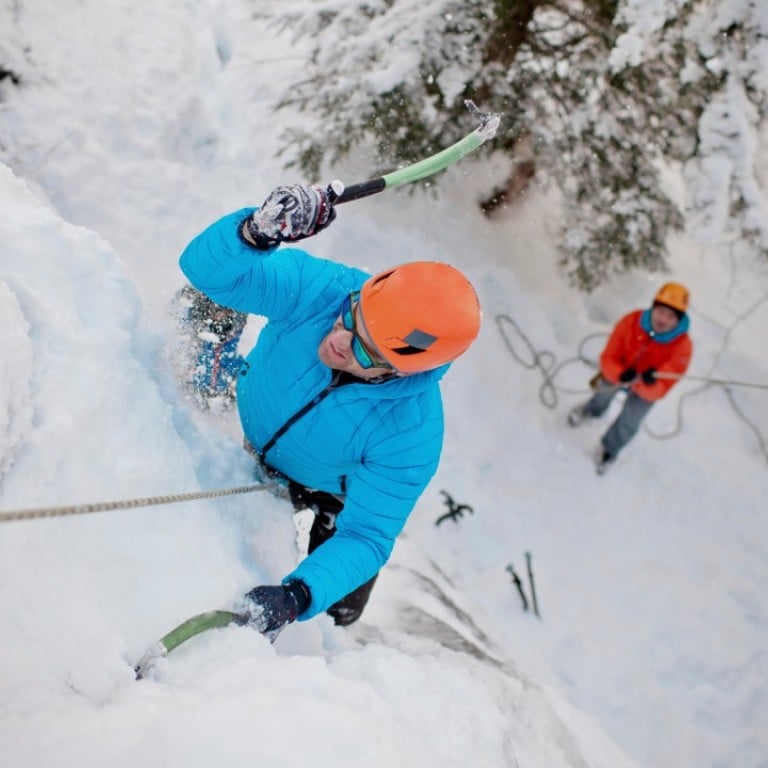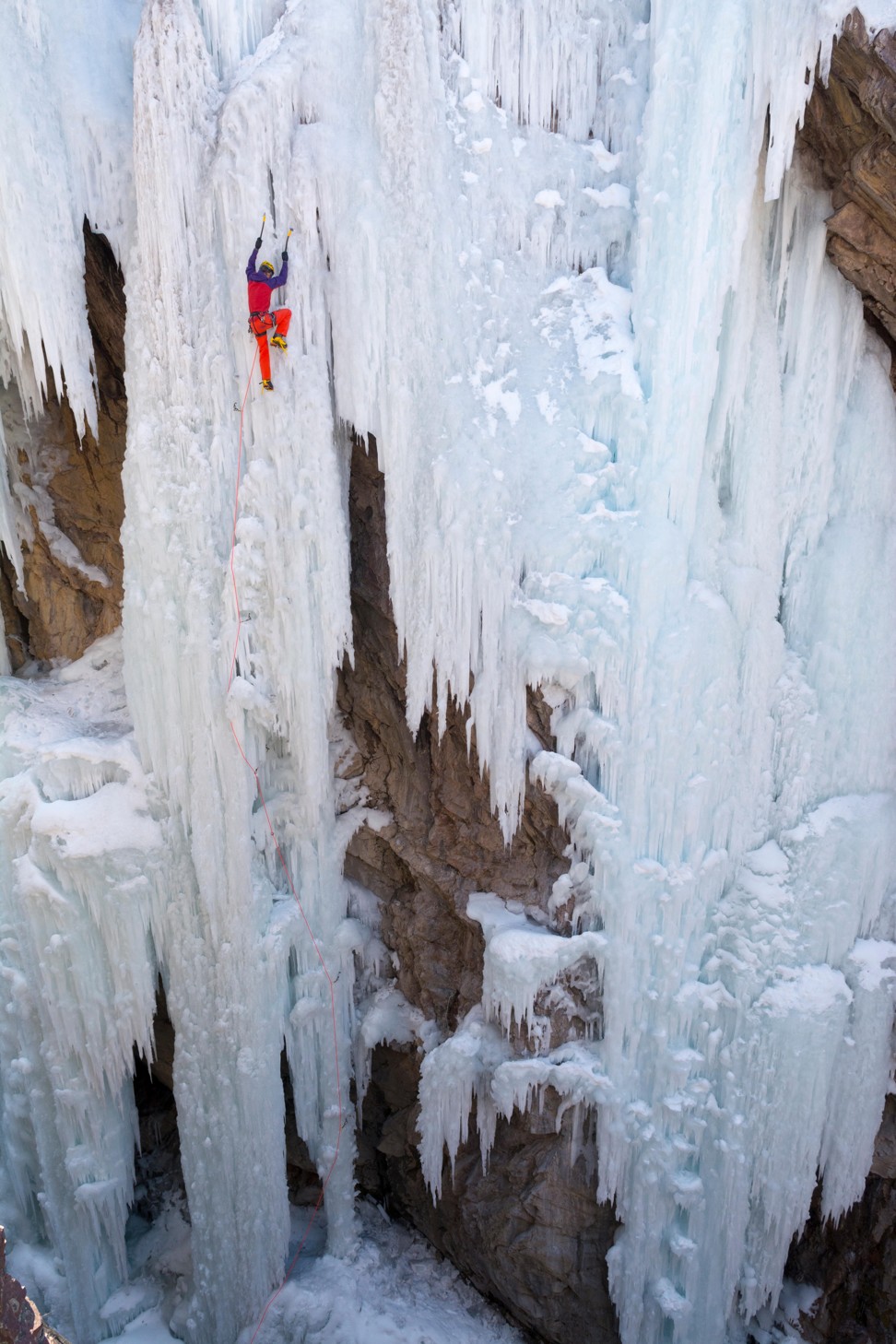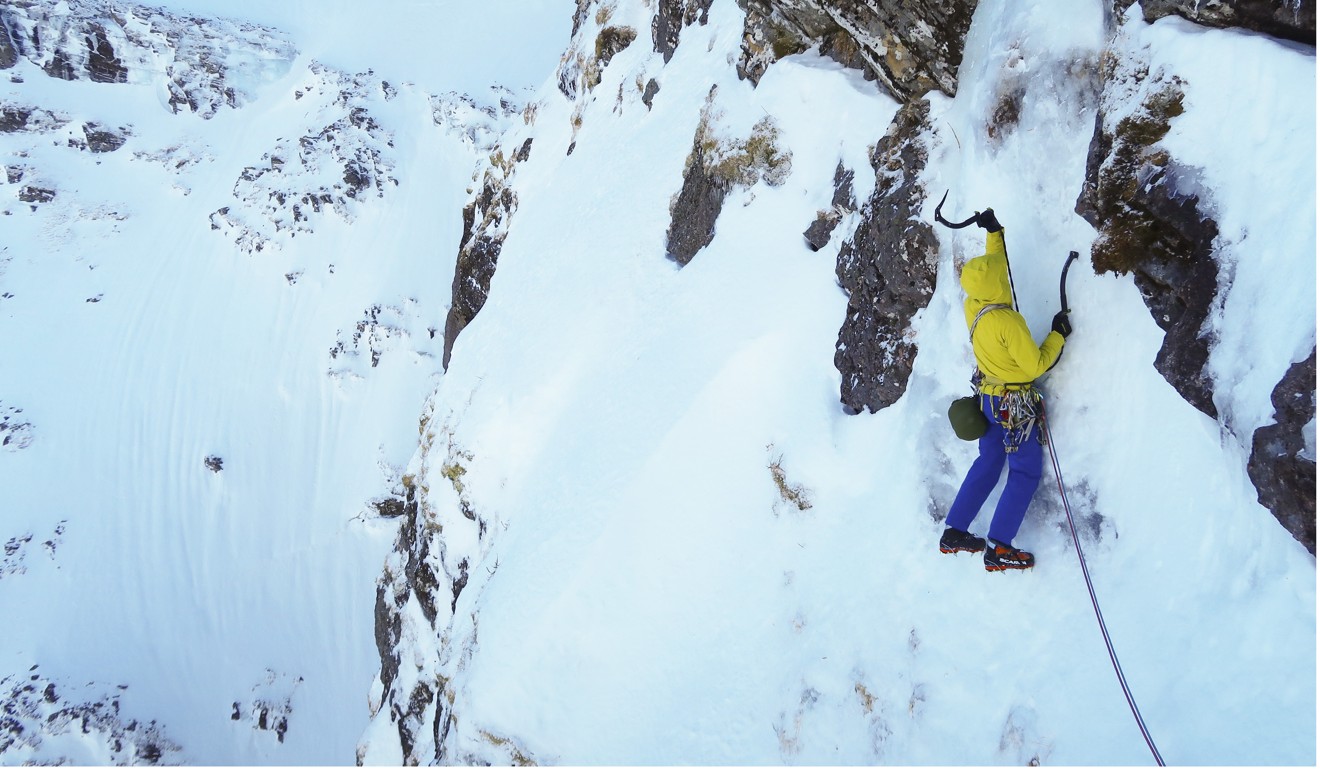
Explainer: the thrills of ice climbing and how to get started – just a sense of adventure needed
From China to the Canadian Rockies, ice climbing is a popular niche in the mountaineering world. We talk to the people who find joy in scaling frozen waterfalls and ice-coated crags as they make their sub-zero ascents
Ice – it’s not something you would want to climb, surely? For a start, it hardly provides the best of traction. However, ice climbing has been a popular niche in the mountaineering world since the late 1970s when Yvon Chouinard, an outdoor equipment innovator and founder of gear manufacturer Patagonia, wrote his seminal book Climbing Ice.
The sport developed in the Alps, the Rocky Mountains and the Scottish Highlands in the 1960s and ’70s, and today there are international ice climbing competitions throughout the world. While these are often held on artificially constructed ice towers, experienced climbers will travel the globe in search of the most challenging frozen waterfalls and ice-coated crags.
Five of the best Asian countries for skiing, recommended resorts and our top pick for this winter
As far as climbers are concerned, there are two types of ice: alpine ice and cascade ice. Alpine ice is found in mountain environments such as the Alps and Himalayas and is often climbed in attempts to summit mountains. Cascade ice, meanwhile, is a frozen liquid flow of water, usually a waterfall.
The classic destination for cascade ice is the Canadian Rockies, although it can also be found in any number of sub-zero winter environments. In Asia, Nepal’s Himalayas are the best-known destination, though it is also popularly found in South Korea – in outlying areas of Seoul, as well as the Gyeonggyi and Gangwon provinces – and Chengdu in China, all of which have held ice climbing competitions in the past.

Vinnie Tan of Singapore-based Ace Adventure Expeditions is part of a team that organises ice climbing courses in China’s Sichuan province every winter.
“Mount Siguniang is one of the best ice climbing areas in the country, but still relatively undiscovered by ice climbers,” she says. “It’s good because there are plenty of waterfalls that freeze up to become ice climbing walls in winter, and they allow different grades of climbing, from beginner to advanced.”
She explains that it is mainly the language barrier that stops more international ice climbers from coming. “The locals only speak Mandarin and the local dialect; there are very few English speakers,” she says, adding that Ace Adventure Expeditions, in collaboration with Singapore-based outdoor adventure consultancy Incredible Journeys, is the only company to run ice climbing courses in English.

Mountain guide Chhering Sherpa, who grew up among the Nepalese Himalayas and now instructs ice climbing in the Canadian Rockies, says there are a lot of good climbing sites in Nepal. “The place where we did most of our guide courses is at Naa in the Rolwaling Valley, as it is relatively accessible from Kathmandu,” he says.
He adds that Rolwaling Valley was once regarded as remote, but now it is becoming an increasingly popular destination for trekking, mountaineering and ice climbing. This is largely because of its access to the Everest region via the Tashi Lapcha Pass, and because most of Nepal’s international mountain guides come from the region.
“There are also some good ice climbing sites at Langtang, Manang and in the Everest region,” says Chhering, adding, however, that the altitude at these sites can be an issue, with some located at around 4,200 metres.

Easier options for novice climbers can be found in Alberta in Canada, where Chhering now instructs climbers ascending Mount Yamnuska. There, you can get started on ice falls located just a few minutes out of the town of Canmore, at a more manageable altitude of 1,350 metres above sea level.
Ice climbing is a sport that beginners can pick up easily, says Matt Helliker, a professional climber and mountain guide based in Chamonix who has several first ascents in the Alps, Alaska and Scotland to his name.
“Anyone who enjoys a bit of an adventure can do it,” he says, citing the Rocky Mountains, the Alps, Nepal and Scotland as his favourite destinations. “You can climb ice at almost any angle, so you can choose a level of steepness that suits you, and increase the angle as you get better.”

Modern “ice tools” – ice picks, boot crampons and ice screws that you can attach a climbing rope to – along with improved clothing and protection have allowed the level of ice climbing to reach standards that would amaze anyone unfamiliar with the sport. It is possible for the best ice climbers to ascend a tower of frozen water as quickly as a monkey climbs a tree, tackling overhangs and long, smooth vertical sections with grace.
Technique is not so important in ice climbing as in regular rock climbing, which is another advantage for novices, Helliker says. “Ice climbing tends to be quite repetitive – you place your ice axes, kick your crampons in and repeat – and the lack of technical moves makes it easier to pick up.”
Having a decent level of fitness helps, as the sport is quite cardiovascular, especially on longer climbs. Good forearm strength is also an advantage when hanging off your ice axes.
Sharp axes and crampons are essential, as is proper clothing and safety equipment – a climbing helmet in particular, as chunks of ice of varying sizes will regularly cascade down as they are dislodged by your climbing partner above you.

If you are new to the sport, you should employ a mountain guide to ensure your safety in a constantly changing environment. “Ice can change rapidly if there are changes in temperature, and this may affect how safe it is to climb on it, particularly if it starts to melt,” Helliker says.
The ice climbing season in the northern hemisphere generally runs through to April depending on where you choose to climb, so there is still time to get out there and swing your axes – just make sure they’re sharp.
Where to go to learn ice climbing:
Val d’Arolla, Switzerland: A five-day introduction to ice climbing with a 3:1 pupil/instructor ratio costs HK$13,880 at alpin-ism.com
Glenmore Lodge, Scottish Highlands: Introductory two-day winter climbing courses featuring both ice climbing and rock climbing start from HK$3,850 at glenmorelodge.org.uk
South Korea: Sanirang Alpine Networks offers beginner courses at various locations across South Korea. Prices on application. sanirang.net
Seven of the best places to go rock climbing in Hong Kong, plus preparation tips and why it’s good for your health and fitness
Xiaojin County, China: Ace Adventure Expeditions offers a 10-day beginner’s course culminating with the ascent of a 5,000-metre peak above the Shuangqiao Valley. Price on application. aceadventure.com.sg
Canmore, Canada: A two-day beginner course in the “ice climbing capital of the world” with Canadian Everest climber Barry Blanchard costs HK$2,500 at yamnuska.com

